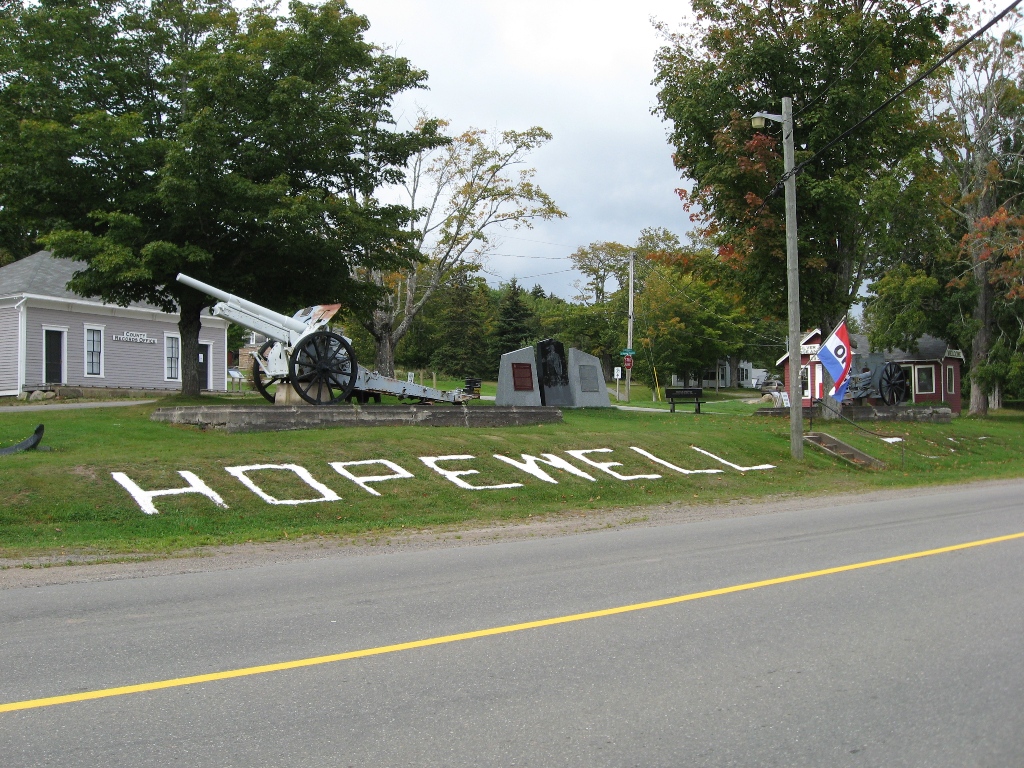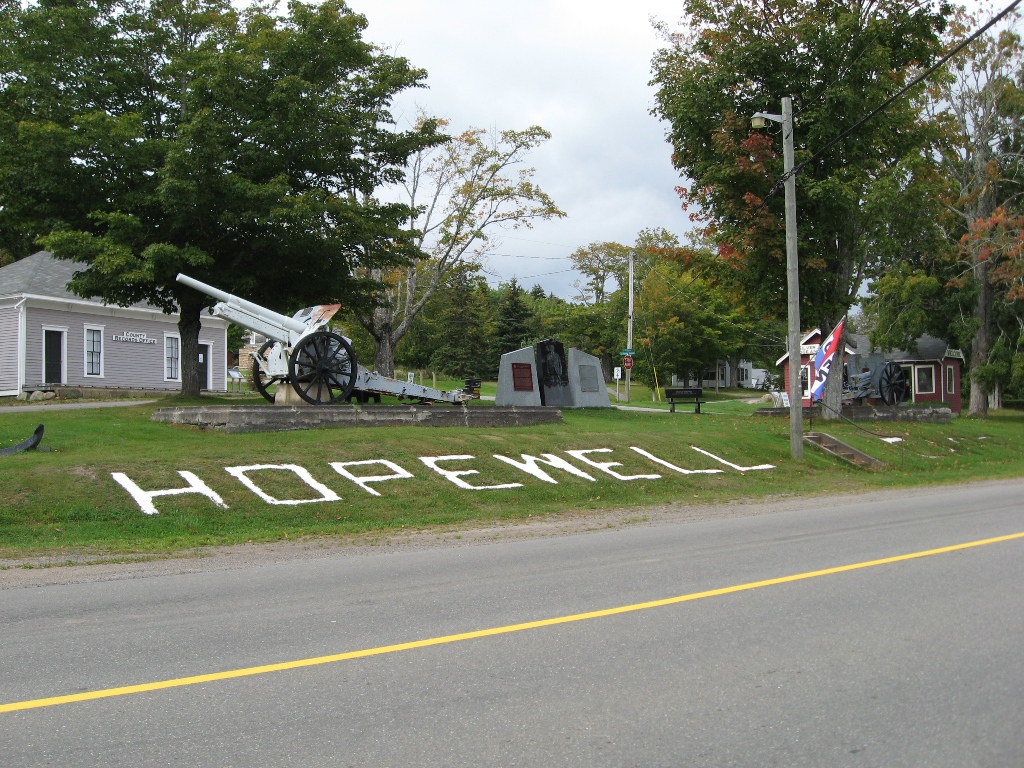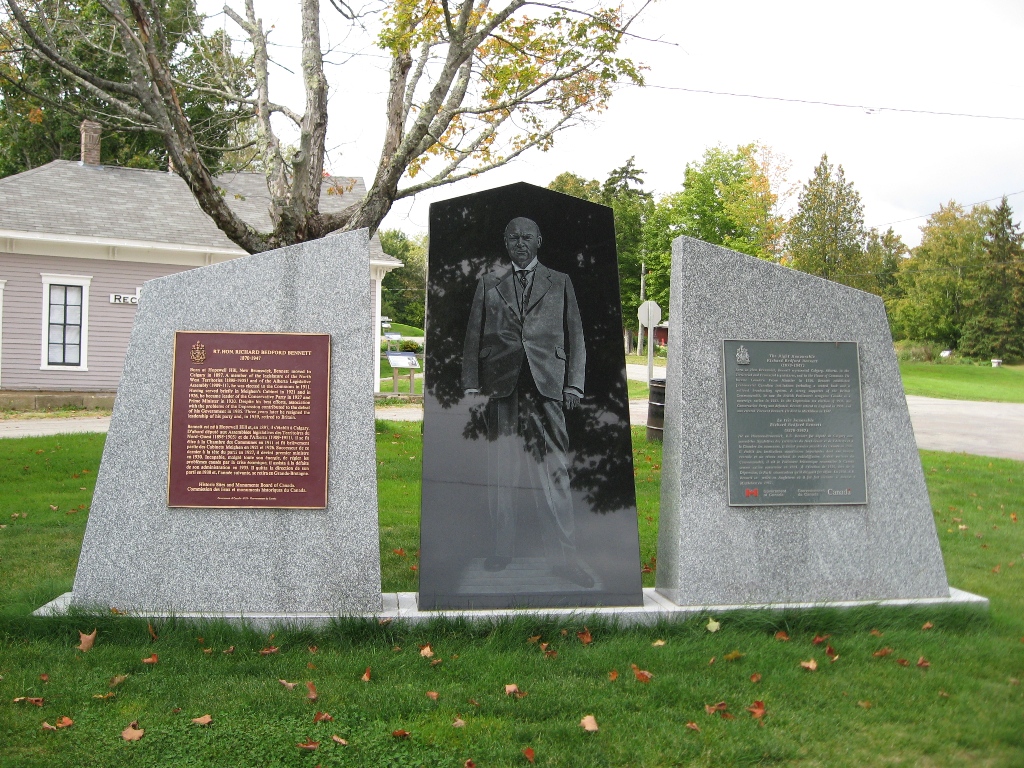Albert County has the distinction of having amongst the highest percentage of population to enlist for service for World War One in all of Canada. The majority of the Albert County men served in the New Brunswick 26th Battalion, known as the "Fighting 26th".
The First World War German 10.5cm Kanone 14 Serial Nr. 590 (1917) field gun was won by the people of Albert County in the Victory Loans Competition of 1919. A “war trophy” was awarded to the county in each province that raised the most money over their set goal. In New Brunswick, Albert County had the distinction of more than tripling their goal of $110,000.00 by raising a total of $347,600.00, which was enough to win the K-14 War Trophy. It is a rare light artillery cannon. Only seven 10.5 cm K-14 cannons exist in the world today! Two are in Canada ~ at Hopewell Cape, Albert County, New Brunswick and at Niagara-on-the-Lake, Ontario.
“Albert Journal” Hillsborough newspaper: "Captured German Gun At Hopewell" May 25, 1920
A captured German gun won by Albert County in a Victory Loan campaign arrived at Cape Station today. Naturally the trophy excited considerable interest, many from far and near flocking to see the weapon which was taken by the Canadian boys at the battle front. The gun is a German field piece mounted with trailer. Captain R. E. Bennett, Chairman of the Victory Loan campaign, expects to take the gun to the Shiretown tomorrow and place it in a square where it is to be set up permanently and for which a proper base is being prepared.
The First World War German 7.7cm Feldkanone (Field Gun) 96 n.A. (neuer Art), Serial Nr. 784, arrived in Albert County on 17 July 1920 after the long journey across the Atlantic Ocean from the battlefields of France. The FK 96 “war trophy” stands as a testament to the courage and sacrifice of the people of Albert County during the Great War. The FK 96 was awarded to Albert County in recognition of having one of the highest per capita enlistments of men in the Canadian Expeditionary Force in all of Canada!
Introducing the 11th Prime Minister of Canada, Right Honourable R.B. Bennett
Richard Bedford Bennett (1870-1947) was Canada’s 11th Prime Minister of Canada. Born on July 3rd, 1870 to Henrietta Stiles and Henry Bennett, he grew up in Hopewell Cape. After teaching school for a few years, Bennett graduated from Dalhousie University in 1893 and practiced law in Chatham, NB for four years before moving to Calgary. He was first elected as a Member of Parliament in 1911, and in 1927 he was elected leader of the Conservative Party. Elected Prime Minister of Canada in 1930 with a strong majority, Bennett campaigned on a platform to provide action to deal with The Great Depression. While Prime Minister, he created many progressive programs including: Relief Act (1932); Canadian Broadcasting Commission, now the CBC (1932); Bank of Canada (1935); and the Canadian Wheat Board (1935). Bennett also signed the Statute of Westminster (1931), making the Canadian Parliament fully independent in its decisions.
As the global economic depression continued to worsen, blame and responsibility for the Great Depression was attributed to Bennett, resulting in the Conservatives losing the election of 1935. After suffering political and personal family losses, Bennett moved to England to live and continue his law practice. In 1941 he was made Viscount of Mickleham, Calgary and Hopewell, and joined the House of Lords. His health gradually deteriorated until his death at home in Mickelham in 1947 and was buried there in the ancient churchyard, the only Prime Minister not interred in Canada. Noted for his strong personality, decisiveness, and dedication to Canada, Bennett was personally generous with his wealth during his lifetime and, by the direction of his estate, and he remains a benefactor to Canadians to this day.
Part of this area of the Museum site also features the National Gravity Net Station marker on the corner of the concrete platform. It is there to serve as a point of measurement for the strength of gravity. There are many of these markers all across Canada and the data is collected every few years to measure the minute variances in the earth’s gravitational field. As an example, when you compare the measurements from here to the markers in Moncton, the indication is that you weigh less here.


